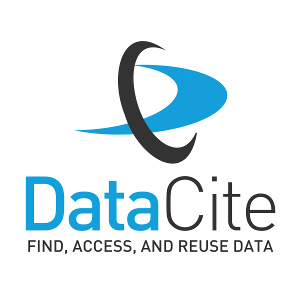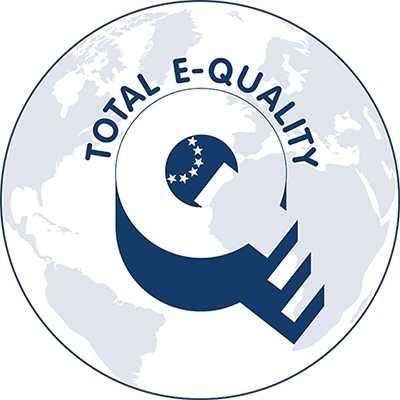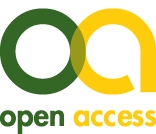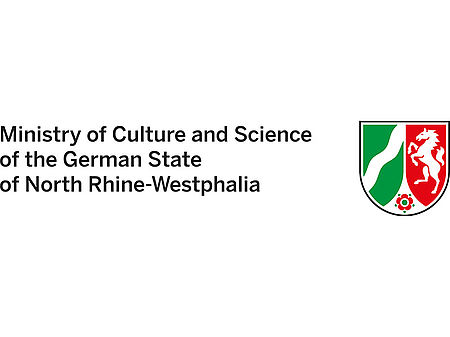What does the term 'open access' mean?
Open access means unrestricted access to knowledge. It encompasses the following key aspects:
- Providing free and open access to academic publications and research data in electronic formats without financial, legal or technical barriers
- Ensuring that authors maintain the exploitation rights to their work and only grant a non-exclusive exploitation right to the publisher for the purposes of publication
- Quality assurance, generally through the peer-review process
- Licensing works on the basis of open content licenses such as Creative Commons
What are the benefits of open access?
- Open access improves the accessibility of publicly funded academic publications and research data. This makes it easier to re-use research results.
- Open access increases the visibility and impact of research work. This creates a citation impact advantage, i.e. it increases the frequency with which a publication is cited. This impact can be further reinforced by the ability to quickly disseminate research results through social networks.
- Open access promotes an interdisciplinary focus of research and cooperation.
- Open access facilitates and improves the transfer of knowledge between the academic and research community and society as a whole.
Open access publishing of research data also offers a number of advantages:
- It makes it possible for other researchers to check and verify research results.
- It prevents the same work being done twice. That means researchers can build on existing work to go further in their research and make more of the available funding.
- The possibility of aggregating data increases the opportunities to gain knowledge and obtain new findings.
Open access is actively supported by the majority of universities both in Germany and in other countries and by four key German research organizations: the Fraunhofer Society, the Helmholtz Association, the Leibniz Association and the Max Planck Society. The German Research Foundation (DFG), the German Federal Ministry of Research, Technology and Space (BMFTR) and the European Commission (EC) are also actively involved in promoting open access. As well as anchoring the principle of open access in the conditions they stipulate for providing funding, many of these organizations also promote projects which improve accessibility to academic and scientific information.
See also
What do Creative Commons licenses offer?
Funding: what requirements do funders impose in regard to open access?
Research data: what are the key issues to consider when publishing this kind of material?
What are the different types of open access?
There are essentially two ways in which authors can provide open access.
- The first is to publish their article in an open access journal, known as 'gold' open access.
- The second choice is the 'self-archiving' of an article that has been published elsewhere, an option known as 'green' open access. An article can be self-archived by depositing it in an institutional or subject-specific repository, on an institutional or private website, or in an archive. Self-archiving can either be carried out alongside or after an article's publication.
Although discussions about open access often focus on journal articles, the same principles also apply to books, research data, conference papers and other types of publication.
See also
Electronic publishing: what are the key issues to consider when publishing articles in open access journals?
Electronic self-archiving: what are the key issues to consider when self-archiving publications in open access repositories (including document servers and online archives) or on websites?
Monographs, contributions to edited volumes and conference papers: what open access publishing options are available for these formats?
Costs of the publishing process
Publishing always incurs costs, regardless of whether articles are published as open access or not. Journals must cover expenses such as preparing and formatting manuscripts, making content available online, coordinating peer review and managing day-to-day operations. Under the traditional, subscription-based model, these costs are recouped through subscription fees, with libraries and other institutions paying for licences that grant access to the journal’s content. Under this model, institutions essentially pay for the privilege of reading published research.
Problems of the subscription model
- Articles from subscription journals are only accessible to people who are members of an institution which has licensed the journal. That may cause delays or interruptions in the research process. Although the required article can be ordered through an inter-library loan or pay-per-view service, this inevitably causes additional costs and delays. The subscription model also excludes interested parties from using an article if they are not members of a subscriber institution.
- Increases in subscription prices have led to a situation often referred to as the "journal crisis": libraries only have a limited budget available for journal acquisitions and are put under pressure to cut their costs at times when financial resources are tight. As subscription prices rise, many libraries are being forced to cancel their subscriptions to academic journals. As a result, the journals cease to be available to the members of the respective institutions, leading to further restrictions on the supply of scholarly and scientific information.
The open access model
The open access model is an attempt to bypass this problem. Open access journals typically cover their operating costs through article processing charges (APCs), also known as publication fees. Once an article is published, it is free to access and read online. However, some open access journals waive APCs by securing alternative funding, often from universities or similar institutions. This model is referred to as diamond open access, a form of gold open access in which the journal is financed neither by subscriptions nor by publication fees.
Fee-free open access journals can be found using resources such as the Directory of Open Access Journals (DOAJ). The Directory of Open Access Books (DOAB) offers an equivalent service for books.
When should I decide whether to publish open access?
Since opting for open access may incur fees, you should make this choice as early in the publication process as possible ‒ and certainly no later than manuscript submission, as this is when most journals ask for funding details (particularly in the case of gold open access).It can be difficult to reverse such decisions later, so it is essential to clarify the fees and funding sources well in advance.
Note, however, that any publication fees only become due after successful peer review and formal acceptance of your manuscript.
If you plan to pursue green open access through self-archiving, it is important to check the conditions under which this is permitted by the journal/publisher.
The decision for or against open access will ultimately also come down to your own institution’s policies, the funding body's requirements and/or agreements with project partners. Verify these requirements early on to ensure any contractual obligations are met.
Your choice of publishing route can significantly impact your work’s visibility and, consequently, your academic reputation. It is therefore advisable to develop a publication strategy that specifies which research outputs to publish, in which venues, and via which access route (gold, hybrid or green).
See also
Publication fees: what are the different ways of covering article processing charges?
Gold open access and green open access: what's the difference?
Reputation and research assessment in academia – a brief introduction
Disclaimer
Important note: The information and links provided here do not represent any form of binding legal advice. They are solely intended to provide an initial basis to help get you on the right track. ZB MED – Information Centre for Life Sciences has carefully checked the information included in the list of FAQs. However, we are unable to accept any liability whatsoever for any errors it may contain. Unless indicated otherwise, any statements concerning individual statutory norms or regulations refer to German law (FAQ updated 05/2025).
Contact

Dr. Jasmin Schmitz
Head of Publication Advisory Services
Phone: +49 (0)221 999 892 665
Send mail
Related links
Directory of Open Access Journals
Directory of Open Access Books




